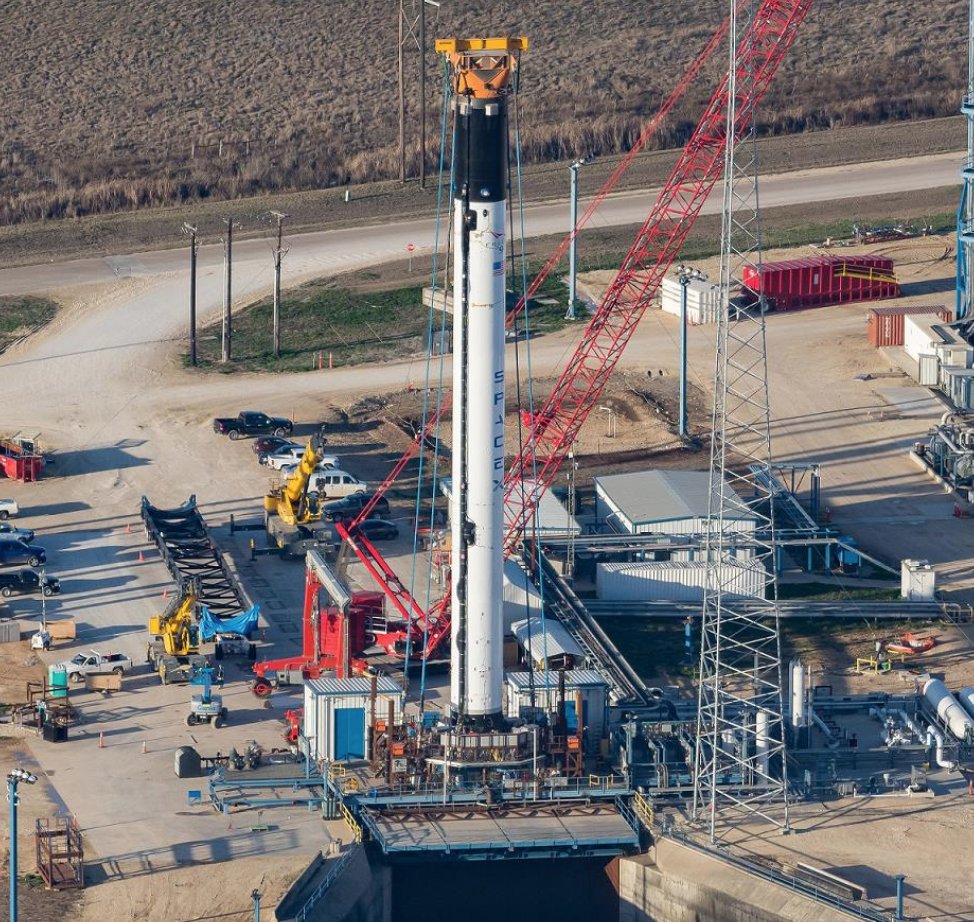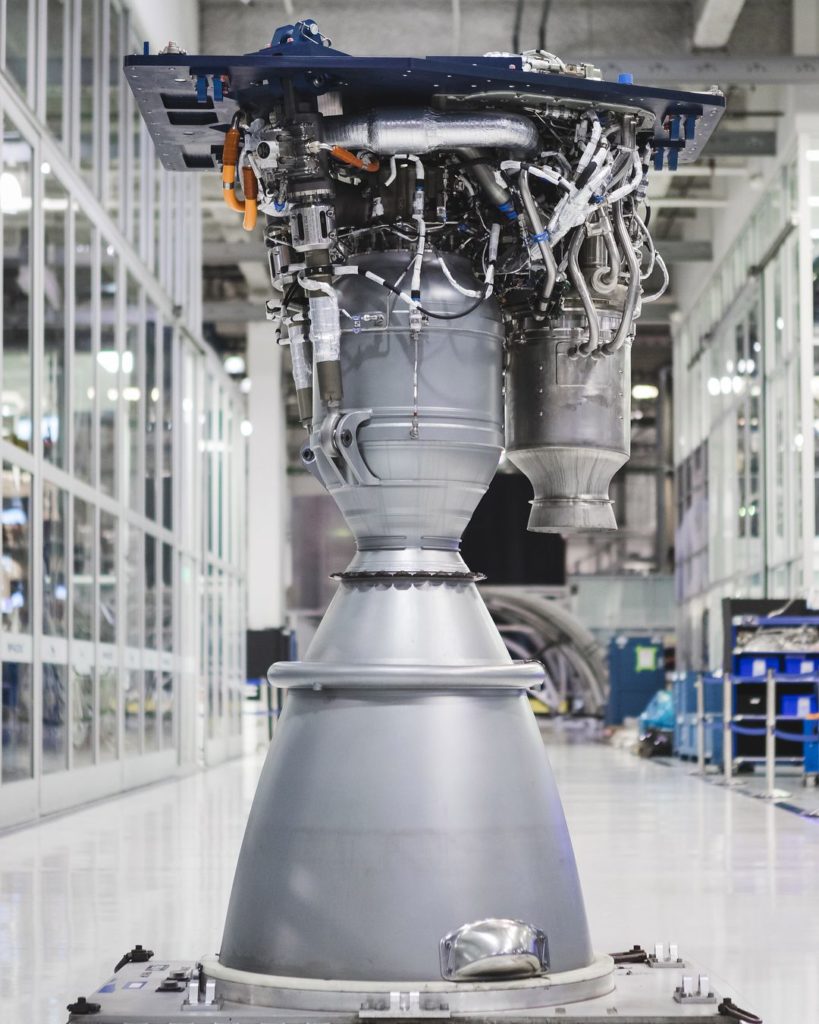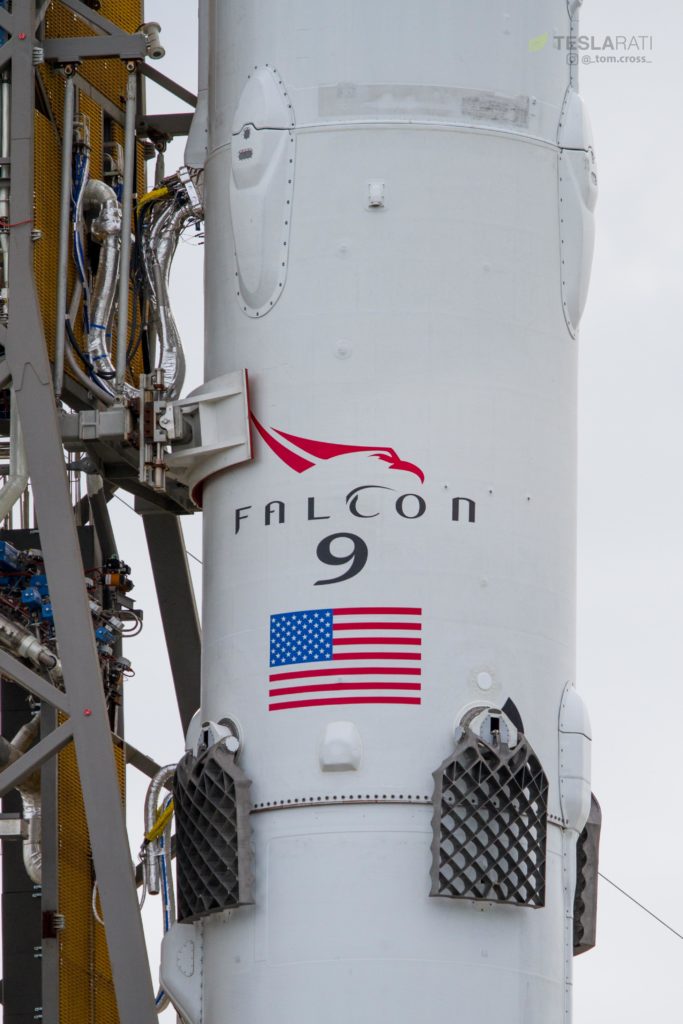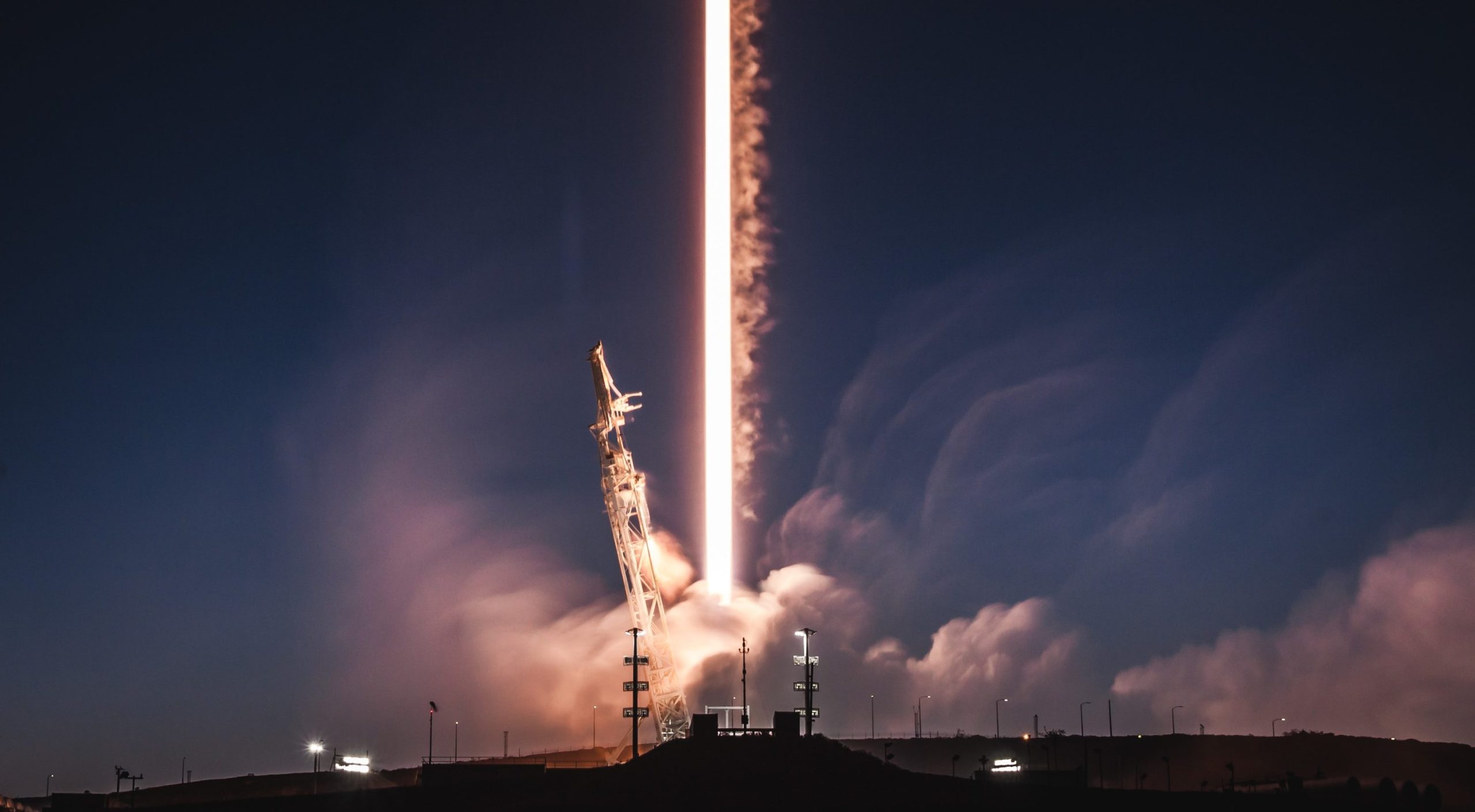
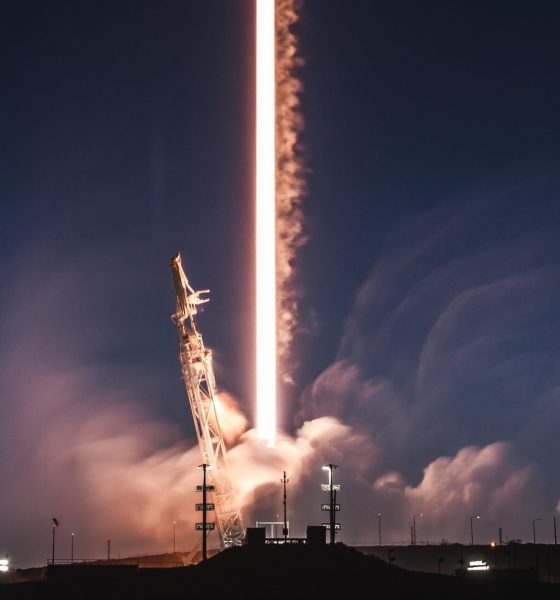
SpaceX
SpaceX’s Falcon 9 Block 5 rocket gets its first public launch date on April 24
After an unusually extended period of testing in McGregor, Texas, SpaceX’s next-generation Falcon 9 Block 5 booster (B1046) appears to be scheduled for an inaugural flight as early as April 24, a three-week recalibration from the original April 5 launch date.
New hardware, new bugs
A fairly significant leap from the current Block 3 and 4 iterations of Falcon 9, it should come as no surprise that the first Block 5 booster has taken a bit longer than anticipated to pass through its first integrated static fire testing and inaugural launch preparations. Put simply, new hardware takes time and safety and reliability take near-complete precedence over expediency.
- SpaceX Block 5 Falcon9 at McGregor, Texas [Credit: Chris G – NSF via Twitter, Reprinted with permission from NASASpaceflight.com]
- A matte-silver Block 5 Merlin 1D rocket engine seen preparing to leave SpaceX’s Hawthorne factory for testing in Texas. (SpaceX)
- RIP B1044’s titanium grid fins. May they make a happy little reef at the bottom of the ocean. (Tom Cross)
- A unique perspective of SpaceX’s upgraded grid fin – dwarfing its human onlookers. (NASA)
Arguably, the better part of half of all of SpaceX’s planned 2018 launches will depend heavily on the Block 5 upgrade of Falcon 9 (and Heavy), especially if the company still intends to complete 20-25 launches between now and the end of the year. Per a relatively new strategy of intentional expending recoverable, flight-proven Falcon 9 boosters after their second launches, SpaceX is on track to effectively deplete their stock of non-Block 5 hardware well before the second half of 2018. As such, approaching Block 5’s introduction with extreme caution (as with most things in rocketry) is undoubtedly in SpaceX’s best interest. The gradual march to B1046’s first flight will thus continue forth to NET April 24 – subject to change, of course.
CONFIRMED by @Thales_Alenia_S, Bangabandhu-1 is manifested to launch on the first 'Block-5' Falcon 9 rocket, NET April 24.
From Thales, "This has resulted in some extra delay. However, Bangabandhu-1 will fly on the most advanced and reliable vehicle ever built by #SpaceX"
— AmericaSpace (@AmericaSpace) March 28, 2018
Thales-Alenia’s confirmation lends credence to the argument that the relatively lengthy period B1046 spent in Texas was simply SpaceX giving a complex and new technological system its due diligence – better to test cautiously and fix bugs than to rush complex procedures and damage the rocket, an eventuality likely to push any tentative launch date back to a much greater extent.

SpaceX continues a cautious regiment of tests for the newest Falcon 9 upgrade, Block 5. (Reddit /u/HollywoodSX)
Launches abound
With Bangabandhu-1 now officially scheduled NET April 24, the SpaceX focal point can return to a flurry of upcoming launches – Iridium-5 (NET Mar 30), CRS-14 (NET April 2), and TESS (NET April 16). Teslarati photographers Pauline Acalin (West Coast) and Tom Cross (East Coast) will be on the ground for all upcoming launches to capture some of the final swan songs of SpaceX’s rapidly diminishing stock of flight-proven Falcon 9s.
Static fire test of Falcon 9 complete—targeting April 2 launch from Pad 40 in Florida for Dragon’s fourteenth mission to the @Space_Station.
— SpaceX (@SpaceX) March 28, 2018
Teslarati – Instagram – Twitter
Tom Cross – Twitter
Pauline Acalin – Twitter
Eric Ralph – Twitter

Elon Musk
Starlink achieves major milestones in 2025 progress report
Starlink wrapped up 2025 with impressive growth, adding more than 4.6 million new active customers and expanding service to 35 additional countries, territories, and markets.

Starlink wrapped up 2025 with impressive growth, adding more than 4.6 million new active customers and expanding service to 35 additional countries, territories, and markets. The company also completed deployment of its first-generation Direct to Cell constellation, launching over 650 satellites in just 18 months to enable cellular connectivity.
SpaceX highlighted Starlink’s impressive 2025 progress in an extensive report.
Key achievements from Starlink’s 2025 Progress
Starlink connected over 4.6 million new customers with high-speed internet while bringing service to 35 more regions worldwide in 2025. Starlink is now connecting 9.2 million people worldwide. The service achieved this just weeks after hitting its 8 million customer milestone.
Starlink is now available in 155 markets, including areas that are unreachable by traditional ISPs. As per SpaceX, Starlink has also provided over 21 million airline passengers and 20 million cruise passengers with reliable high-speed internet connectivity during their travels.
Starlink Direct to Cell
Starlink’s Direct to Cell constellation, more than 650 satellites strong, has already connected over 12 million people at least once, marking a breakthrough in global mobile coverage.
Starlink Direct to Cell is currently rolled out to 22 countries and 6 continents, with over 6 million monthly customers. Starlink Direct to Cell also has 27 MNO partners to date.
“This year, SpaceX completed deployment of the first generation of the Starlink Direct to Cell constellation, with more than 650 satellites launched to low-Earth orbit in just 18 months. Starlink Direct to Cell has connected more than 12 million people, and counting, at least once, providing life-saving connectivity when people need it most,” SpaceX wrote.
Elon Musk
Starlink passes 9 million active customers just weeks after hitting 8 million
The milestone highlights the accelerating growth of Starlink, which has now been adding over 20,000 new users per day.

SpaceX’s Starlink satellite internet service has continued its rapid global expansion, surpassing 9 million active customers just weeks after crossing the 8 million mark.
The milestone highlights the accelerating growth of Starlink, which has now been adding over 20,000 new users per day.
9 million customers
In a post on X, SpaceX stated that Starlink now serves over 9 million active users across 155 countries, territories, and markets. The company reached 8 million customers in early November, meaning it added roughly 1 million subscribers in under seven weeks, or about 21,275 new users on average per day.
“Starlink is connecting more than 9M active customers with high-speed internet across 155 countries, territories, and many other markets,” Starlink wrote in a post on its official X account. SpaceX President Gwynne Shotwell also celebrated the milestone on X. “A huge thank you to all of our customers and congrats to the Starlink team for such an incredible product,” she wrote.
That growth rate reflects both rising demand for broadband in underserved regions and Starlink’s expanding satellite constellation, which now includes more than 9,000 low-Earth-orbit satellites designed to deliver high-speed, low-latency internet worldwide.
Starlink’s momentum
Starlink’s momentum has been building up. SpaceX reported 4.6 million Starlink customers in December 2024, followed by 7 million by August 2025, and 8 million customers in November. Independent data also suggests Starlink usage is rising sharply, with Cloudflare reporting that global web traffic from Starlink users more than doubled in 2025, as noted in an Insider report.
Starlink’s momentum is increasingly tied to SpaceX’s broader financial outlook. Elon Musk has said the satellite network is “by far” the company’s largest revenue driver, and reports suggest SpaceX may be positioning itself for an initial public offering as soon as next year, with valuations estimated as high as $1.5 trillion. Musk has also suggested in the past that Starlink could have its own IPO in the future.
News
SpaceX shades airline for seeking contract with Amazon’s Starlink rival

SpaceX employees, including its CEO Elon Musk, shaded American Airlines on social media this past weekend due to the company’s reported talks with Amazon’s Starlink rival, Leo.
Starlink has been adopted by several airlines, including United Airlines, Qatar Airways, Hawaiian Airlines, WestJet, Air France, airBaltic, and others. It has gained notoriety as an extremely solid, dependable, and reliable option for airline travel, as traditional options frequently cause users to lose connection to the internet.
Many airlines have made the switch, while others continue to mull the options available to them. American Airlines is one of them.
A report from Bloomberg indicates the airline is thinking of going with a Starlink rival owned by Amazon, called Leo. It was previously referred to as Project Kuiper.
American CEO Robert Isom said (via Bloomberg):
“While there’s Starlink, there are other low-Earth-orbit satellite opportunities that we can look at. We’re making sure that American is going to have what our customers need.”
Isom also said American has been in touch with Amazon about installing Leo on its aircraft, but he would not reveal the status of any discussions with the company.
The report caught the attention of Michael Nicolls, the Vice President of Starlink Engineering at SpaceX, who said:
“Only fly on airlines with good connectivity… and only one source of good connectivity at the moment…”
CEO Elon Musk replied to Nicolls by stating that American Airlines risks losing “a lot of customers if their connectivity solution fails.”
American Airlines will lose a lot of customers if their connectivity solution fails
— Elon Musk (@elonmusk) December 14, 2025
There are over 8,000 Starlink satellites in orbit currently, offering internet coverage in over 150 countries and territories globally. SpaceX expands its array of satellites nearly every week with launches from California and Florida, aiming to offer internet access to everyone across the globe.
Currently, the company is focusing on expanding into new markets, such as Africa and Asia.
